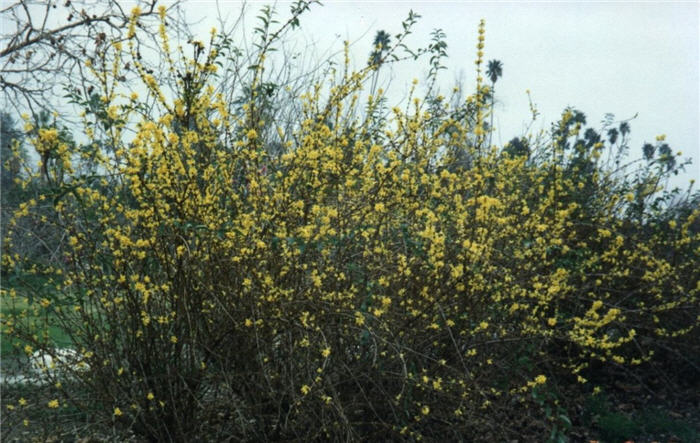| Botanical Name: Forsythia x intermedia | |
| Common Name: Forsythia |

-
Anatomy
-
Culture
-
Design
Plant Type
Shrub
Height Range
3-6', 6-12'
Flower Color
Yellow
Flower Season
Winter, Spring
Leaf Color
Green
Bark Color
Brown
Fruit Color
n/a
Fruit Season
n/a
Sun
Full, Half
Water
Medium
Growth Rate
Moderate
Soil Type
Sandy, Clay, Loam, Rocky, Unparticular
Soil Condition
Average, Rich, Poor, Well-drained, Dry
Soil pH
Neutral
Adverse Factors
n/a
Design Styles
Formal, Meadow, Mediterranean, Ranch, Woodland
Accenting Features
Fragrance, Showy Flowers, Specimen
Seasonal Interest
Winter, Spring, Fall
Location Uses
Background, Shrub Border, Foundation
Special Uses
Cut Flowers, Hedge, Screen, Mass Planting
Attracts Wildlife
n/a
Information by: Stephanie Duer
Photographer: Connon Nursery
Photographer: Connon Nursery
-
Description
-
Notes
Truly a harbinger of spring, the bright yellow flowers of Forsythia are a welcome sign that spring is near. Forsythia is a deciduous shrub with an upward arching habit. Yellow spring flowers are followed by leaves of soft green that take on a reddish hue in the fall. Size varies with variety, so check the label. Grows best in full sun, though will tolerate part shade. Great shrub for borders and is an excellent cut flower.
Shearing really does ruin the graceful lines of Forsythia. To control size or re-invigorate for new growth, prune hard immediately after flowering or selectively prune any time during the summer; see tips for guidance. Requires well drained soil; heavy wet soils will cause it to decline and be diseased. Requires only moderate water once established. Forsythia, while quite showy in the spring, can be a bit drab in the summer, so plant it with later flowering shrubs such as lilacs and rose-of-sharon, both of which bloom later in the season.